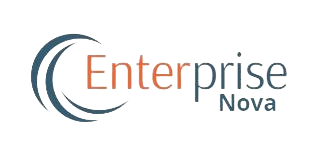Trends in the digital world today have shown that success is not just about having the latest tools. It is about designing systems that support business goals and governing them responsibly so they deliver value, stay secure, and remain compliant.
Two of the most respected global frameworks that help organizations achieve this balance are TOGAF and COBIT. While TOGAF focuses on how to design and structure enterprise architecture, COBIT ensures how to manage, control, and govern it effectively.
Together, they form a powerful combination that bridges strategy, technology, and governance.
What Is TOGAF?
TOGAF (The Open Group Architecture Framework) is a leading framework used for enterprise architecture (EA). It provides organizations with a structured approach to designing, planning, implementing, and managing their IT architecture so that technology aligns with business strategy.
At its core, TOGAF uses the Architecture Development Method (ADM), an eight-phase cycle that guides architects from vision to implementation and continuous improvement. The ADM ensures that every system, application, and data process supports the organization’s goals.
TOGAF helps organizations:
- Improve alignment between IT and business objectives.
- Reduce redundancy and duplication in systems.
- Increase interoperability across departments.
- Provide governance and structure to architecture development.
In short, TOGAF turns strategy into a clear architectural roadmap that ensures every IT decision serves a long-term purpose.
What Is COBIT?
COBIT (Control Objectives for Information and Related Technologies) is an IT governance and management framework created by ISACA. It provides organizations with a comprehensive system to manage and control IT processes, ensuring technology delivers measurable business value.
COBIT focuses on governance, risk management, compliance, and performance monitoring. It defines specific objectives, metrics, and maturity models that guide how IT operations should be designed, monitored, and improved.
As ISACA explains, COBIT helps enterprises:
- Align IT goals with business priorities.
- Manage risks and ensure regulatory compliance.
- Measure IT performance using key indicators.
- Strengthen cybersecurity and data protection.
In simple terms, COBIT ensures that IT systems are not only effective, but also controlled, secure, and auditable.
Key Differences Between TOGAF and COBIT
Although TOGAF and COBIT share a common goal, maximizing business value through IT, they focus on different aspects of enterprise management.
| Aspect | TOGAF | COBIT |
| Purpose | Enterprise architecture design and transformation | IT governance, control, and compliance |
| Focus | Defines what to build and how to structure it | Defines how to manage and control IT |
| Orientation | Strategic and architectural | Operational and governance-oriented |
| Core Framework | ADM (Architecture Development Method) | Governance Objectives and Management Processes |
| Key Domains | Business, Application, Data, and Technology | Governance, Risk, Compliance, Performance |
| End Goal | Create a flexible and efficient architecture | Ensure IT delivers value and meets compliance |
How TOGAF and COBIT Work Together
Instead of viewing TOGAF and COBIT as alternatives, leading organizations use them side by side. They complement each other in powerful ways:
Governance Meets Architecture
TOGAF defines how systems should be designed. COBIT ensures those designs follow proper governance, risk, and compliance policies. Together, they align IT execution with business oversight.
Strategy Meets Control
While TOGAF translates high-level business goals into architecture, COBIT ensures that architecture is implemented responsibly, with the right controls, metrics, and checks.
Continuous Improvement
TOGAF’s ADM encourages iteration and refinement. COBIT provides the tools to measure performance, assess maturity, and feed improvements back into the next architecture cycle.
Security and Risk Integration
In modern enterprises, security is a shared responsibility. TOGAF defines the security architecture, while COBIT ensures security policies are enforced and monitored for compliance.
Shared Value Creation
When applied together, TOGAF and COBIT enable organizations to build IT ecosystems that are efficient, secure, scalable, and accountable, the foundation of digital resilience.
When to Use TOGAF, COBIT, or Both
| Scenario | Use TOGAF | Use COBIT | Use Both |
| You are redesigning enterprise architecture or migrating systems | ✔ | ✔ | |
| You need better IT governance or risk control | ✔ | ✔ | |
| You are aiming for compliance with audit or regulatory standards | ✔ | ✔ | |
| You want to measure IT performance and accountability | ✔ | ✔ | |
| You are pursuing end-to-end digital transformation | ✔ | ✔ |
Many organizations adopt TOGAF first to structure their architecture, then integrate COBIT to govern, measure, and optimize it.
Benefits of Combining TOGAF and COBIT
- Stronger alignment between architecture and governance.
- Improved risk management and regulatory compliance.
- Better decision-making through clear accountability and metrics.
- Efficient resource utilization and cost savings.
- Enhanced cybersecurity posture through governance-backed architecture.
By blending TOGAF’s architectural strength with COBIT’s governance precision, businesses can build IT environments that are both visionary and dependable.
Conclusion
In the evolving landscape of enterprise IT, TOGAF and COBIT stand out as complementary frameworks that empower organizations to design smarter systems and govern them effectively.
- TOGAF helps define the “what” — a well-structured, business-aligned architecture.
- COBIT defines the “how” — the governance and controls needed to manage IT responsibly.
When combined, they create a robust foundation for digital transformation, security, and long-term business value. In short, TOGAF and COBIT are not rivals, they are partners in building resilient, well-governed enterprises ready for the future.

